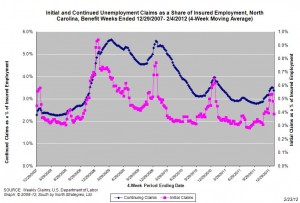27.02.2012
Policy Points
From Random Samplings, the blog of the US Census Bureau …
According to tables from the 2011 CPS released today, more than 30 percent of adults this age reported they had a bachelor’s or higher degree. As recently as 1998, less than a quarter of people this age had this level of education. And back in 1947, the rate was only 5 percent. Yes, we’ve come a long way.
…
In the last 10 years the number of Hispanics with a bachelor’s degree or more grew by 80 percent, from 2.1 million in 2001 to 3.8 million in 2011. Over the same period, the number of blacks with a bachelor’s degree or more grew by 47 percent. The number of Asians with this level of education increased by 28 percent, and the number of non-Hispanic whites increased 24 percent. These last two percentages are not statistically different, so we can’t really say whether Asians or non-Hispanic whites had the higher growth.
…
Eleven percent of the population, or 22 million, had an advanced degree, including 16 million with master’s and 6 million with professional or doctoral degrees. The number with advanced degrees increased 40 percent from 2001 to 2011.
24.02.2012
Policy Points
Economic policy reports, blog postings, and media stories of interest:
24.02.2012
Policy Points
Algernon Austin of the Economic Policy Institute points out that African-American workers have been dealing with high levels of unemployment for the last 50 years.
While whites have experienced periods of high unemployment during the 1970s, early 1980s, and in the past few years, their highest rates are in the range of the lowest unemployment rates for African Americans in the last 50 years. Thus, for African Americans, the last 50 years have been marked by extremely high unemployment occasionally interrupted by periods of merely high unemployment. At no point can we say that blacks have experienced a low unemployment rate.
24.02.2012
Policy Points
For the benefit week ending on February 2, 2012, some 11,363 North Carolinians filed initial claims for state unemployment insurance benefits, and 121,066 individuals applied for state-funded continuing benefits. Compared to the prior week, there were fewer initial and continuing claims. These figures come from data released by the U.S. Department of Labor.
Averaging new and continuing claims over a four-week period — a process that helps adjust for seasonal fluctuations and better illustrates trends — shows that an average of 12,712 initial claims were filed over the previous four weeks, along with an average of 124,420 continuing claims. Compared to the previous four-week period, the average number of initial claims was lower, as was the average number of continuing claims.
One year ago, the four-week average for initial claims stood at 16,602, and the four-week average of continuing claims equaled 139,816.
In recent weeks covered employment has increased and now slightly exceeds the level recorded a year ago (3.74 million versus 3.71 million). Nevertheless, there are still fewer covered workers than there were in January 2008, which means that payrolls are smaller today than they were four years ago.
The graph shows the changes in unemployment insurance claims measured as a share of covered employment in North Carolina since the recession’s start in December 2007. 
Both new and continuing claims appear to have peaked for this cycle, and the four-week averages of new and continuing claims have fallen considerably. Yet continuing claims remain at an elevated level, which suggests that unemployed individuals are finding it difficult to find new positions.
23.02.2012
Policy Points
Economic policy reports, blog postings, and media stories of interest:


 Email Sign-Up
Email Sign-Up RSS Feed
RSS Feed